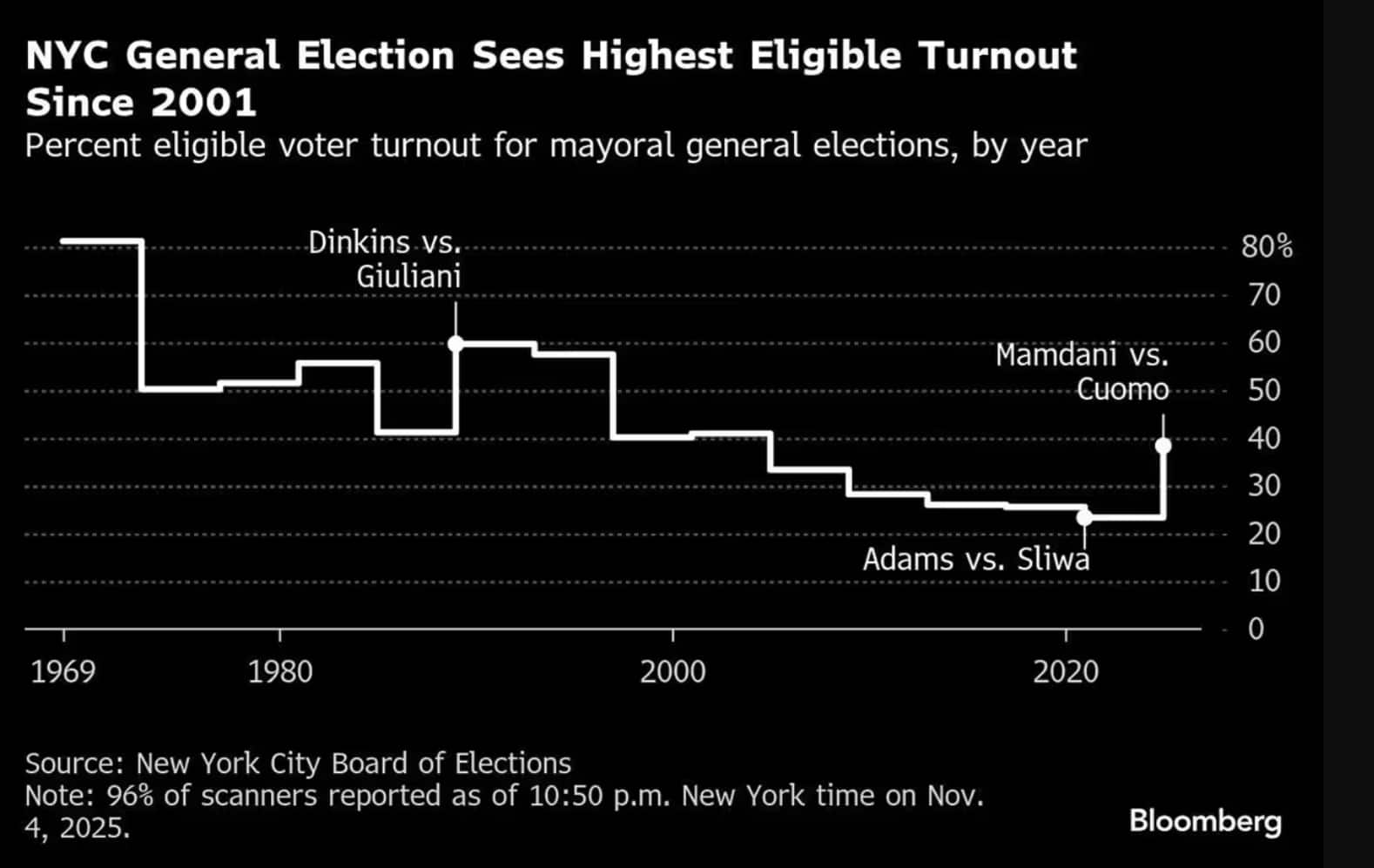



Zohran Mamdani, who once described himself as "Donald Trump's worst nightmare," lived up to that claim with a historic landslide victory in the 2025 New York City mayoral election, defeating former Governor Andrew Cuomo.
Mamdani also directly challenged US President Donald Trump, who had previously threatened to cut federal funds to the city, delivering a pointed message in his victory speech: “Turn the volume up.”
In a 30-minute electrifying address, Mamdani celebrated the milestone, declaring New York City “a city built by immigrants, powered by immigrants, and now led by an immigrant.” His triumph marks a significant shift in the city’s political landscape, signaling the rise of a new progressive era.
Mamdani, secured 50.3% of the vote to Cuomo’s 41.6%, while Curtis Sliwa finished with 7.1% and sitting Mayor Eric Adams, who had exited the race, received 0.3%.

Mamdani’s campaign, which surged from single-digit polling to victory, focused on the city’s affordability crisis. He promised sweeping reforms, including rent freezes, “free” buses, universal childcare, government-run grocery stores, and an increase in the minimum wage, all aimed at reducing costs for working New Yorkers.
Eschewing traditional strategies, Mamdani’s team took cues from leaders like Trump and Alexandria Ocasio-Cortez, building direct relationships with voters through grassroots events, limited-edition merchandise, and volunteer-driven campaigns.
Citywide scavenger hunts, soccer tournaments, and creative engagement helped mobilize thousands of supporters, demonstrating a new model of city politics.
The election also saw record turnout, with 70% of eligible voters casting ballots, the highest in over two decades, reflecting the energized response to Mamdani’s platform. By focusing on affordability, inclusivity, and immigrant leadership, Mamdani has reshaped New York’s political landscape and set the stage for a new era in the city’s governance.

Mamdani’s campaign revolved around affordability and social welfare, proposing policies aimed at reducing costs for New Yorkers and shrinking the wealth gap:
While ambitious, several challenges may affect implementation:
Mamdani’s campaign has clearly tapped into voter dissatisfaction and progressive momentum, but turning his ambitious promises into actionable policy will require careful planning, negotiation, and balancing of fiscal realities with social goals.
Discover the latest Business News, Sensex, and Nifty updates. Obtain Personal Finance insights, tax queries, and expert opinions on Moneycontrol or download the Moneycontrol App to stay updated!
Find the best of Al News in one place, specially curated for you every weekend.
Stay on top of the latest tech trends and biggest startup news.